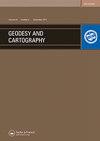行业新闻
IF 2.1
Q3 REMOTE SENSING
引用次数: 1
摘要
澳大利亚有一个代表空间科学专业人员并为他们的专业发展提供服务的新机构,即空间科学研究所(SSI)。今天在堪培拉宣布了新机构的成立,这是之前涵盖该行业的五个主要专业协会进行了两年讨论的结果。澳大利亚测量师学会(ISA)、澳大利亚工程与矿业测量师学会(IEMSA)、澳大利亚测绘科学研究所(MSIA)、澳大利亚城市与区域信息系统协会(AURISA)和澳大利亚遥感与摄影测量协会(RSPAA)的成员以压倒性多数投票赞成将这些机构合并为一个机构。新成立的测量师学会临时主席贝克先生表示,现有的机构反映了20年前的行业结构,当时测量师、制图师和摄影测量师的角色截然不同。但不断变化的技术模糊了职业之间的界限。年轻的毕业生经常拒绝加入任何机构,因为没有一个机构充分处理他们所从事的活动领域。他说:“我们相信,该学会的架构会更完善,以满足会员的跨学科专业发展需要。”本文章由计算机程序翻译,如有差异,请以英文原文为准。
INDUSTRY NEWS
Australia has a new institution representing professionals in the spatial sciences and providing for their professional development the Spatial Sciences lnstitute (SSI). The establishment of the new body was announced in Canberra today and is the outcome of two years of discussion between the five major professional associations that previously covered the industry. The members of the Institution of Surveyors, Australia (ISA), the Institution of Engineering and Mining Surveyors, Australia (IEMSA), the Mapping Sciences Institute, Australia (MSIA), the Australasian Urban and Regional Information Systems Association (AURISA) and the Remote Sensing and Photogrammetry Association of Australasia (RSPAA) voted overwhelmingly to combine those institutions into one body. Interim Chairman o f the new Institute, Mr Graham Baker, said the existing institutions reflected the structure of the industry 20 years ago when the roles of surveyors, cartographers and photogrammetrists were quite distinct. But changing technology had blurred the boundaries between the professions. Young graduates frequently declined to join any of the institutions because none of them adequately addressed the field of activities in which they worked. "We believe that the SSI will be better structured to provide for the cross-disciplinary professional development needs of its members," said Mr Baker.
求助全文
通过发布文献求助,成功后即可免费获取论文全文。
去求助
来源期刊

Geodesy and Cartography
REMOTE SENSING-
CiteScore
1.50
自引率
0.00%
发文量
0
审稿时长
15 weeks
期刊介绍:
THE JOURNAL IS DESIGNED FOR PUBLISHING PAPERS CONCERNING THE FOLLOWING FIELDS OF RESEARCH: •study, establishment and improvement of the geodesy and mapping technologies, •establishing and improving the geodetic networks, •theoretical and practical principles of developing standards for geodetic measurements, •mathematical treatment of the geodetic and photogrammetric measurements, •controlling and application of the permanent GPS stations, •study and measurements of Earth’s figure and parameters of the gravity field, •study and development the geoid models,
 求助内容:
求助内容: 应助结果提醒方式:
应助结果提醒方式:


